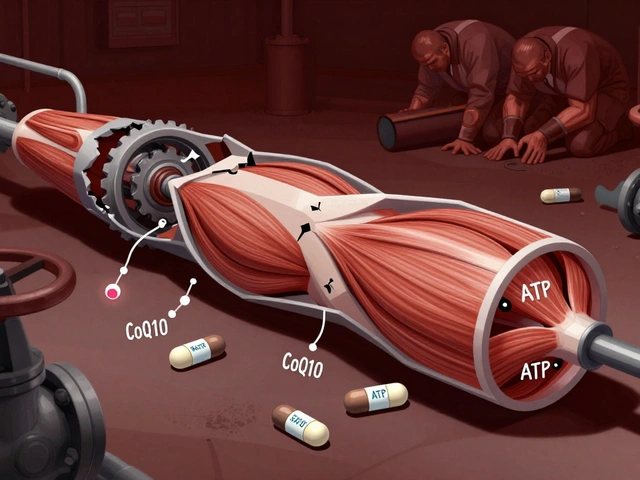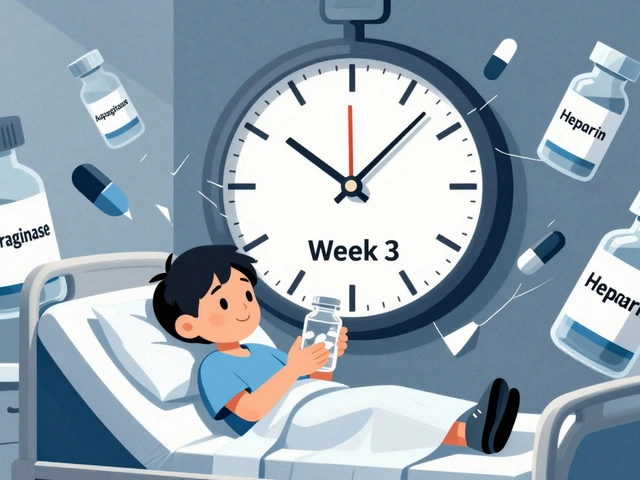Entocort – Uses, Dosage, Side Effects and How to Get It Cheap
When working with Entocort, a delayed‑release oral corticosteroid that delivers budesonide directly to the intestine. Also known as budesonide tablets, it is designed to treat inflammation in the gut while keeping systemic exposure low.
Entocort’s active component, budesonide, a glucocorticoid with high first‑pass metabolism that reduces inflammation locally in the gastrointestinal tract, sets it apart from traditional steroids like prednisone. Because budesonide is mostly broken down before it hits the bloodstream, patients often experience fewer classic steroid side‑effects such as weight gain or mood swings. The drug’s pharmacology makes it a go‑to choice for long‑term maintenance therapy in many cases.
The condition most commonly managed with Entocort is Crohn's disease, a chronic inflammatory bowel disease that can affect any part of the gastrointestinal tract. When inflammation flares, budesonide helps calm the immune response, reducing abdominal pain, diarrhea, and bleeding. For many patients, Entocort serves as a bridge between induction therapy and safer long‑term maintenance plans.
Understanding how to take Entocort correctly is crucial. The standard dosage for adults with mild‑to‑moderate Crohn's disease is 9 mg once daily, swallowed whole with water. Crushing or chewing the tablet can destroy the delayed‑release coating, causing a spike in systemic steroid levels. Timing matters too—most doctors recommend taking the medication in the morning with food to align with the body's natural cortisol rhythm.
Side‑effects are generally mild but still worth watching. The most common complaints include headache, nausea, and a temporary increase in blood sugar. Because budesonide can still affect the adrenal glands, doctors may order periodic blood tests to ensure hormone levels stay balanced. If you notice persistent bruising, severe abdominal pain, or signs of infection, contact your healthcare provider immediately.
One big question patients ask is how to keep the cost down. The marketplace for generic budesonide has grown, and many reputable online pharmacies now list it at a fraction of the brand price. Our post collection below walks you through step‑by‑step checks for safe purchasing, how to compare prices, and what red flags signal a counterfeit. By following those guides, you can secure a legitimate supply without breaking the bank.
Beyond price, safety is a top priority. Look for pharmacies that display a valid license, require a prescription, and offer clear return policies. Cross‑checking the drug’s INN (International Non‑proprietary Name) against the product label ensures you receive the correct formulation. Our comparison articles also cover alternative treatments—like mesalamine or systemic steroids—so you can decide if Entocort truly fits your treatment plan.
For patients who switch from other corticosteroids, it’s important to taper gradually under medical supervision. Budesonide’s rapid gut absorption means abrupt changes can lead to withdrawal symptoms or a flare‑up. A typical taper might reduce the dose by 3 mg every two weeks, but your doctor will tailor the schedule based on disease activity and blood work.
Diet and lifestyle play a supporting role, too. While Entocort tackles inflammation, a low‑residue diet, adequate hydration, and stress‑management techniques can boost overall outcomes. Some of our guides detail practical nutrition tips that complement medication, helping you stay in remission longer.
In short, Entocort offers targeted relief for Crohn's disease with a side‑effect profile that’s kinder than older steroids. Whether you’re starting therapy, looking for cost‑saving options, or comparing alternatives, the resources below give you clear steps to make informed choices. Let’s dive into the articles that cover buying guides, safety checks, dosage tricks, and comparison charts so you can manage your condition confidently.

Entocort (Budesonide) vs. Other IBD Medications: A Practical Comparison
A side‑by‑side comparison of Entocort (budesonide) with prednisone, mesalamine, azathioprine, and biologics, covering effectiveness, side‑effects, cost, and best‑fit scenarios.
read more




